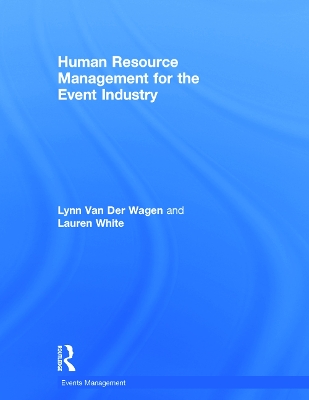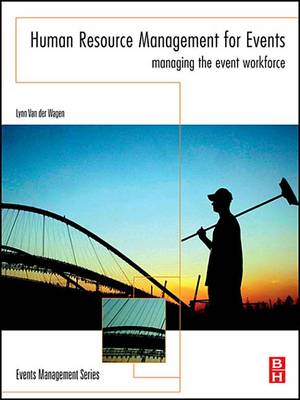Events Management
2 total works
Human Resource Management for the Event Industry
by Lynn Van der Wagen and Lauren White
Human Resource Management for Events still remains the only text to introduce students to the unique application of HR principles in the context of a highly complex event environment. Linking theory, research and application it looks at the purpose and processes of managing such a sizable & varied workforce in a highly pressured environment through the differing and various types of events from sporting to arts to business events.
Since the first edition, there have been many important developments in this field and this second edition has been completely revised and updated in the following ways:
- extensively updated content to reflect recent issues and trends including: labour markets and industry structure, impacts of IT and social media, risk management, volunteer motivation, talent management, equal opportunities and managing diversity. All explored specifically within the Events Industry
- extended volunteer chapter, including new material on ethics, volunteer motivation and satisfaction.
- a new chapter on Internal Communications, looks at how an effective internal communication plan can be achieved which is a critical part of HR strategy in the unique event environment.
- updated and new international case studies throughout to explore key issues and show real life applications of HRM in the Events Industry.
- supported with new lecturer and students online resources including: power point slides, suggested answers to review questions, web & video links to additional resources and a student test bank.
Written in a user friendly style, each chapter includes international examples, bulleted lists, guides to further reading and exercises to test knowledge.
Human Resource Management for Events is the first text to cover management of human resources in the event environment. Linking theory, research and application it covers the differing and various types of event in which human resource management is key, such as:
* Business Events - a vast sector including events people who manage conferences, exhibitions, incentive trips and individual business travel.
* Sporting Events - this sector includes sporting events ranging from the Olympic Games, Rugby World Cup, Soccer World Cup, Tour de France, Grand Prix to many smaller, local sporting events.
* Arts and Entertainment - the logistics, risk and financial issues facing entertainment events are leading to the development of more sophisticated operational skills for this sector. Music festivals are increasingly popular.
* Public Events - civic ceremonies, parades, celebrations, festivals and protests all fall within the scope of public events. Planning, approval and risk management are increasingly on the agenda for all levels of government.
The particular challenges provided by such events are varied. The size of the workforce explodes at the time of the event to include the event management team, many paid staff, hundreds of volunteers and multiple contractors, such as food vendors and cleaning teams. Everyone working on the site comes into the scope of the event workforce. Little time is available for training and motivation plays a key role in retention and customer service. Decision making occurs on the run and the event is over before anyone can think about performance appraisal. The environment is further characterised by a fast pace, high stress levels and many workers are fatigued by the bump in period before the event audience pours through the gates to add yet another level of pressure. These features of the human resources environment are quite different to those of the traditional workforce.
Human Resource Management for Events is vital reading for both students and practitioners involved in this crucially important aspect of event management.

